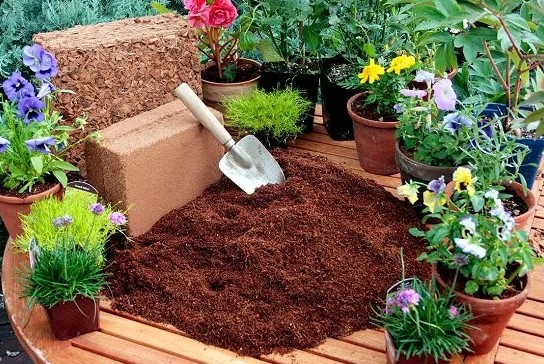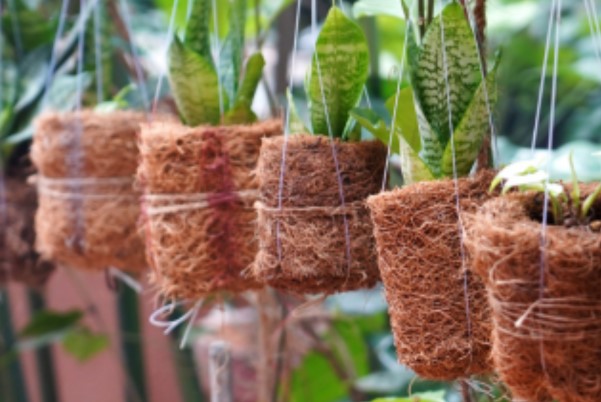
Welcome to our blog post exploring the marvels of cocopeat singapore, an incredible and sustainable solution for all your gardening needs. If you’re a passionate gardener or someone looking to embark on a green journey, you’ve come to the right place. In this article, we will dive deep into the world of cocopeat, shedding light on its benefits, applications, and why it has gained immense popularity among gardening enthusiasts worldwide.
Cocopeat, also known as coir pith, is a natural byproduct derived from the fibrous husk of coconuts. With its exceptional properties and eco-friendly nature, cocopeat has emerged as a game-changer in the gardening industry. Whether you have a backyard garden, indoor plants, or are venturing into hydroponics, cocopeat offers a sustainable and versatile alternative to traditional gardening materials.
Throughout this blog post, we will explore the numerous advantages of cocopeat, including its ability to improve soil structure, retain moisture, and promote optimal plant growth. We’ll also discuss its wide range of applications, from seed starting to potting mixes and hydroponic systems.
But cocopeat is more than just a gardening material. It’s a solution that aligns with the principles of environmental sustainability. By using cocopeat, you contribute to reducing waste and supporting the renewable coconut industry.
So, whether you’re a seasoned gardener seeking new techniques or a beginner looking for a sustainable gardening approach, join us as we uncover the wonders of cocopeat and its potential to transform your garden into a thriving, green oasis. Get ready to unlock the secrets of cocopeat and take your gardening endeavors to new heights!
What is Cocopeat?
Cocopeat, also known as coir pith, is a natural and renewable gardening material that is derived from the fibrous husk of coconuts. When coconuts are harvested for their edible flesh and water, the husks are left behind as a waste product. These husks undergo a process to extract cocopeat, transforming what was once considered waste into a valuable resource.
Cocopeat has a unique composition that makes it highly beneficial for gardening purposes. It consists of fine particles and fibers that give it a lightweight and sponge-like texture. It is available in various forms, including compressed blocks, loose fibers, and coco discs.
What sets cocopeat apart is its exceptional water retention capacity. It can absorb and hold up to 10 times its weight in water, ensuring a consistent moisture supply for plants. Additionally, cocopeat has excellent aeration properties, allowing for proper airflow and oxygenation of the roots.
Due to its organic nature, cocopeat is rich in essential nutrients, including potassium, phosphorus, and micronutrients. While it does not provide significant amounts of these nutrients, it acts as a medium that retains and slowly releases them to plant roots over time.
Cocopeat is also pH-neutral, which means it has a balanced pH level that is suitable for most plants. This makes it a versatile choice for a wide range of gardening applications.
As a sustainable gardening material, cocopeat offers several advantages. By utilizing coconut husks that would otherwise go to waste, cocopeat contributes to reducing environmental impact and supports the circular economy.
In summary, cocopeat is a natural, renewable, and environmentally friendly material that enhances soil structure, retains moisture, and provides a suitable growing medium for plants. Its water retention capacity, aeration properties, and nutrient content make it an excellent choice for both amateur and experienced gardeners alike.
Benefits of Cocopeat
Cocopeat offers a plethora of benefits that make it a preferred choice for gardeners seeking sustainable and efficient gardening solutions. Let’s explore some of the remarkable advantages of using cocopeat in your garden:
- Enhanced Soil Structure: Cocopeat acts as a soil conditioner, improving the overall structure of the soil. When mixed with garden soil or other organic materials, it enhances the soil’s ability to retain moisture and nutrients. This results in better aeration, root development, and overall plant growth.
- Excellent Moisture Retention: One of the standout features of cocopeat is its exceptional water retention capacity. It absorbs and holds water efficiently, allowing plants to access moisture as needed. This property is particularly beneficial in dry climates or for plants that require consistent watering.
- Optimal Drainage and Aeration: The fibrous nature of cocopeat promotes excellent drainage, preventing waterlogging and root rot. It allows excess water to flow through the medium while retaining enough moisture for the plants. Furthermore, its structure facilitates proper aeration, ensuring a healthy root environment.
- Nutrient Retention and Slow Release: Cocopeat has the ability to hold onto nutrients and release them gradually to plant roots. This feature helps in the efficient uptake of essential elements, promoting healthy plant growth and reducing the risk of nutrient leaching.
- Weed Suppression: When used as a mulching material, cocopeat forms a protective layer on the soil surface, reducing weed growth. It acts as a natural weed suppressor, minimizing competition for resources and saving time and effort in weed management.
- Eco-Friendly and Sustainable: By using cocopeat, you contribute to sustainable gardening practices. It is an organic and renewable resource derived from coconut husks, which are a byproduct of the coconut industry. By utilizing this waste material, cocopeat helps in reducing environmental impact and promoting a circular economy.
- Versatile Applications: Cocopeat finds applications in various gardening practices. It is widely used in seed starting, container gardening, hydroponics, and as a soil amendment. Its versatility allows gardeners to explore different growing methods and adapt to specific plant requirements.
With its ability to improve soil structure, retain moisture, promote nutrient availability, and support sustainable practices, cocopeat has become a staple choice for gardeners worldwide. Incorporating cocopeat into your gardening routine can lead to healthier plants, increased yields, and a more environmentally conscious approach to cultivation.
Applications of Cocopeat

Cocopeat, with its versatile characteristics, finds a wide range of applications in gardening and horticulture. Let’s explore the various ways in which Coir peat can be used to enhance your gardening practices:
- Seed Starting: Cocopeat is an excellent medium for starting seeds. Its fine texture provides a conducive environment for germination. It retains moisture effectively, ensuring the seeds have the necessary hydration for successful sprouting. Cocopeat’s gentle structure also allows for easy root penetration, promoting healthy seedling development.
- Potting Mixes: Cocopeat is a key ingredient in potting mixes for container gardening. When combined with other components such as perlite, vermiculite, or compost, it creates a well-balanced growing medium. The cocopeat improves water retention while maintaining proper drainage, providing an ideal substrate for potted plants.
- Hydroponics: Cocopeat plays a vital role in hydroponic systems, where plants are grown without soil. It acts as a stable and supportive growing medium for plant roots. The high water retention capacity of cocopeat ensures a consistent supply of moisture, while its fibrous structure facilitates nutrient absorption. Hydroponic setups utilizing cocopeat as the growing medium often lead to robust plant growth and efficient nutrient delivery.
- Soil Amendment: Cocopeat serves as an excellent soil amendment, especially in sandy or clay soils. When incorporated into garden beds or mixed with existing soil, it improves soil structure, water retention, and nutrient availability. Cocopeat helps sandy soils retain moisture and nutrients, preventing them from being washed away. In clay soils, it enhances drainage and aeration, allowing roots to penetrate more easily.
- Mulching: Cocopeat can be used as a mulching material to cover the soil surface around plants. It acts as a protective layer, reducing moisture evaporation and weed growth. Cocopeat mulch also helps regulate soil temperature and prevents soil erosion.
- Composting: Cocopeat can be added to compost piles or bins to enhance the composting process. Its high carbon content balances the nitrogen-rich materials, aiding in the decomposition process and producing nutrient-rich compost.
- Worm Bedding: Cocopeat makes an ideal bedding material for vermicomposting, providing a comfortable environment for earthworms. It retains moisture, promotes aeration, and acts as a source of organic matter, creating optimal conditions for worms to thrive and convert organic waste into nutrient-rich worm castings.
With its versatility and beneficial properties, cocopeat opens up a world of possibilities for gardeners. Whether you’re starting seeds, growing plants in containers, venturing into hydroponics, improving soil quality, or exploring sustainable gardening methods, cocopeat can be a valuable addition to your gardening toolkit.
Tips for Using Cocopeat
Using cocopeat effectively in your gardening endeavors requires proper handling and understanding of its unique properties. Here are some essential tips to help you make the most out of cocopeat:
- Hydrate Before Use: Coir peat is typically sold in a dehydrated form to minimize storage and transportation costs. Before using it, rehydrate the cocopeat by adding water gradually and allowing it to absorb and expand. Fluff and break apart any clumps to ensure even hydration.
- Optimal Mixing Ratios: When using cocopeat as a growing medium or soil amendment, it’s important to achieve the right balance of cocopeat with other components. A common ratio is 1 part cocopeat to 1 or 2 parts other materials such as compost, perlite, or vermiculite. Experiment with different ratios to find what works best for your specific plants and gardening goals.
- pH Adjustment: While cocopeat is generally pH-neutral, it has a slightly acidic nature. If you’re using cocopeat in conjunction with plants that require a more alkaline or acidic environment, consider adjusting the pH accordingly. Test the pH of the cocopeat mixture and make any necessary adjustments using pH modifiers or additives.
- Proper Drainage: Ensure adequate drainage when using cocopeat to prevent waterlogging. Incorporate drainage holes in containers and maintain a suitable ratio of cocopeat to other components for optimal water flow. Regularly monitor moisture levels to avoid oversaturation or dryness.
- Complement with Nutrients: While cocopeat retains some nutrients, it is relatively low in nutrient content compared to other growing media. Supplementing with organic fertilizers or slow-release fertilizers can provide the necessary nutrients for plant growth. Regularly monitor and adjust nutrient levels based on plant requirements.
- Monitor Watering: Cocopeat has excellent water retention properties, but it’s essential to monitor watering frequency and ensure proper moisture levels. Avoid overwatering, as excess water can lead to root rot. Check the moisture content of the cocopeat and adjust watering accordingly, keeping in mind the specific needs of your plants.
- Reusability and Sustainability: Cocopeat can be reused in gardening applications. After a growing season or when replanting, gently remove the used cocopeat from pots or garden beds, rinse it thoroughly to remove any debris, and allow it to dry. Recondition the cocopeat by adding fresh compost or organic matter before reusing it.
By following these tips, you can maximize the benefits of cocopeat and create an optimal growing environment for your plants. Embrace the versatility of cocopeat and explore its potential to improve soil structure, enhance moisture retention, and support healthy plant growth in your garden.
Case Studies or Success Stories
Real-life examples and success stories provide valuable insights into the practical application and effectiveness of cocopeat in various gardening scenarios. Let’s explore a few case studies that highlight the success achieved with cocopeat:
- The Organic Kitchen Garden: Sarah, an avid home gardener, transformed her backyard into a thriving organic kitchen garden using cocopeat as the primary growing medium. By incorporating cocopeat into her raised beds, she experienced improved soil structure, enhanced moisture retention, and healthier plant growth. Sarah noticed a significant reduction in water usage and found her plants were more resilient to drought conditions. Her vegetable yields increased, and she enjoyed a bountiful harvest of fresh and nutritious produce.
- Urban Rooftop Garden: David, a city dweller with limited gardening space, embraced cocopeat in his rooftop container garden. Using a mix of cocopeat, compost, and vermiculite, he created lightweight and well-draining potting mixes for his container plants. The cocopeat’s water retention capacity allowed him to minimize watering frequency, making it ideal for his busy urban lifestyle. David successfully grew a variety of flowering plants, herbs, and vegetables, transforming his rooftop into a lush and vibrant oasis.
- Hydroponic Herb Farm: Tom and Lisa, aspiring commercial herb growers, established a hydroponic farm using cocopeat as the growth medium for their herbs. With the water retention and aeration properties of cocopeat, they were able to provide an optimal environment for their plants’ root systems. The nutrient-rich water solution circulated efficiently through the cocopeat, ensuring the herbs received the necessary nourishment. Tom and Lisa witnessed accelerated plant growth, improved flavor profiles, and a consistent supply of fresh herbs, leading to successful business expansion.
- Sustainable Landscaping Project: The municipal parks department embarked on a sustainable landscaping project, replacing traditional soil with cocopeat in park gardens and flower beds. The switch to cocopeat resulted in improved soil structure, reduced water consumption, and enhanced plant health. The parks saw reduced maintenance costs and witnessed the beauty of the gardens flourishing year-round. The use of cocopeat aligned with the city’s sustainability goals and garnered positive feedback from residents and visitors alike.
These case studies demonstrate the versatility and success of cocopeat in different gardening contexts. From home gardens to commercial operations and urban spaces, cocopeat has proven its ability to enhance plant growth, conserve water, and support sustainable practices. These success stories inspire and encourage gardeners of all levels to explore the potential of cocopeat in their own gardening ventures.
Environmental Sustainability
Cocopeat not only offers numerous benefits for gardeners but also contributes to environmental sustainability. Let’s delve into the environmental aspects of cocopeat and its positive impact:
- Renewable Resource: Cocopeat is derived from coconut husks, a natural byproduct of the coconut industry. Coconuts are a renewable resource, and utilizing the discarded husks to produce cocopeat helps reduce waste and optimize resource utilization.
- Reduction of Landfill Waste: By using cocopeat, gardeners contribute to reducing the amount of coconut husks ending up in landfills. This not only minimizes waste accumulation but also helps alleviate the environmental burden associated with landfill management.
- Carbon Sequestration: Coconut trees are known for their ability to sequester carbon dioxide from the atmosphere. By utilizing cocopeat, which is derived from coconut husks, gardeners indirectly support the carbon sequestration capacity of coconut trees. This aids in mitigating greenhouse gas emissions and combating climate change.
- Water Conservation: Cocopeat’s exceptional water retention properties play a vital role in water conservation. It reduces the need for frequent watering, thus minimizing water consumption in gardening practices. Conserving water is crucial for sustainable water management, especially in regions facing water scarcity or undergoing drought conditions.
- Soil Health Improvement: Cocopeat enhances soil structure and fertility when used as a soil amendment. By improving soil quality, cocopeat promotes healthier plant growth and reduces the reliance on chemical fertilizers. This, in turn, helps minimize the potential environmental impact associated with synthetic fertilizers.
- Reduced Chemical Runoff: Cocopeat’s ability to retain nutrients and water reduces the risk of nutrient leaching into the surrounding environment. This mitigates the chances of chemical runoff, which can negatively impact water bodies and ecosystems. The use of cocopeat supports environmentally friendly gardening practices and reduces the ecological footprint of gardening activities.
- Sustainable Gardening Practices: Incorporating cocopeat into gardening routines encourages sustainable practices. Its organic nature aligns with principles of organic gardening, promoting the use of natural materials and minimizing the reliance on synthetic inputs. By adopting sustainable gardening methods, individuals contribute to overall environmental well-being.
The utilization of cocopeat in gardening not only provides immediate benefits for plants but also contributes to broader environmental sustainability goals. By harnessing the potential of cocopeat, gardeners actively participate in waste reduction, water conservation, carbon sequestration, and the promotion of sustainable practices. Embracing cocopeat as a gardening medium aligns with the ethos of environmental stewardship and fosters a greener and more sustainable future.
Conclusion
Cocopeat, derived from coconut husks, offers a multitude of benefits for gardeners and the environment alike. Throughout this blog post, we have explored the various aspects of cocopeat, including its definition, benefits, applications, tips for usage, success stories, and environmental sustainability. By incorporating cocopeat into gardening practices, individuals can enhance plant growth, improve soil quality, conserve water, and contribute to sustainable gardening methods.
Cocopeat’s unique properties, such as its excellent water retention, aeration capabilities, and nutrient retention, make it an ideal choice for seed starting, potting mixes, hydroponics, soil amendment, mulching, composting, and worm bedding. Gardeners can leverage cocopeat’s versatility to create optimal growing environments and witness the positive impact on plant health and productivity.
The success stories and case studies shared in this blog post highlight the transformative power of cocopeat in various gardening scenarios. From home gardens to commercial operations, cocopeat has proven to be a valuable asset, enabling gardeners to achieve impressive results and cultivate thriving plants.
Moreover, cocopeat contributes to environmental sustainability. By utilizing a renewable resource, reducing waste, promoting carbon sequestration, conserving water, improving soil health, and encouraging sustainable gardening practices, cocopeat helps minimize the ecological footprint of gardening activities. It aligns with the global effort to combat climate change, reduce landfill waste, and protect natural resources.
